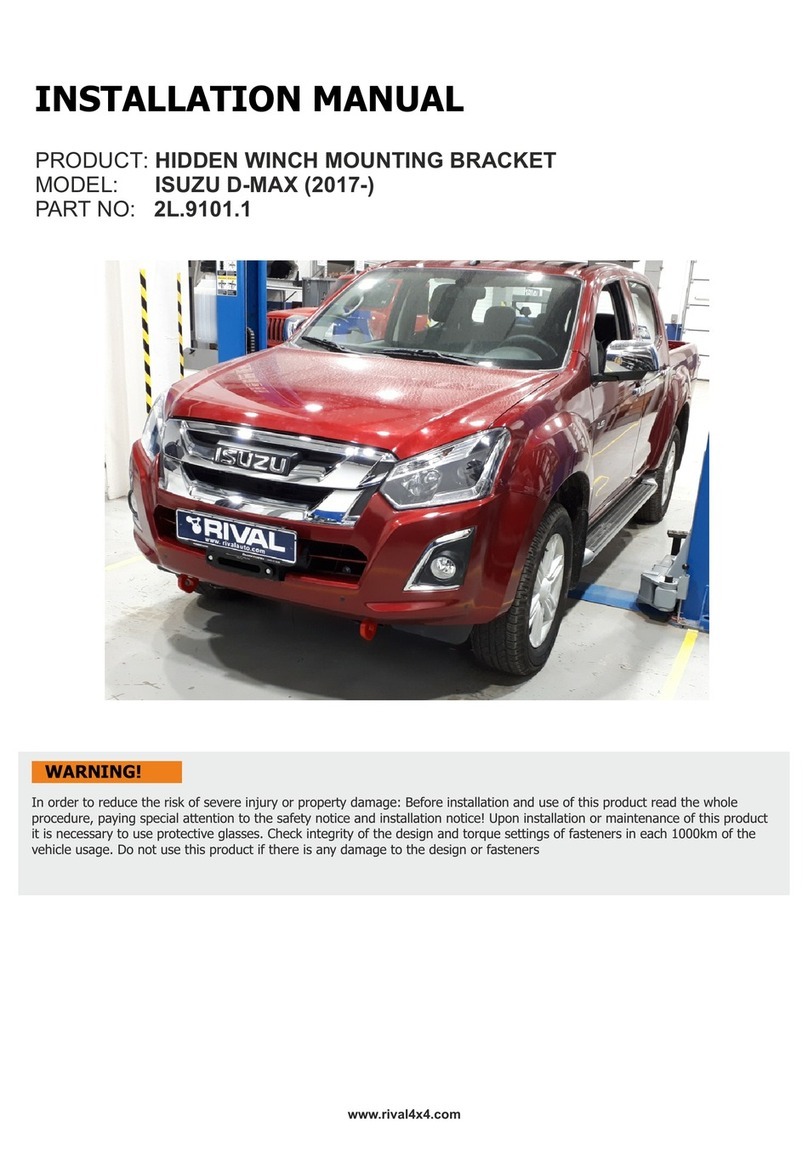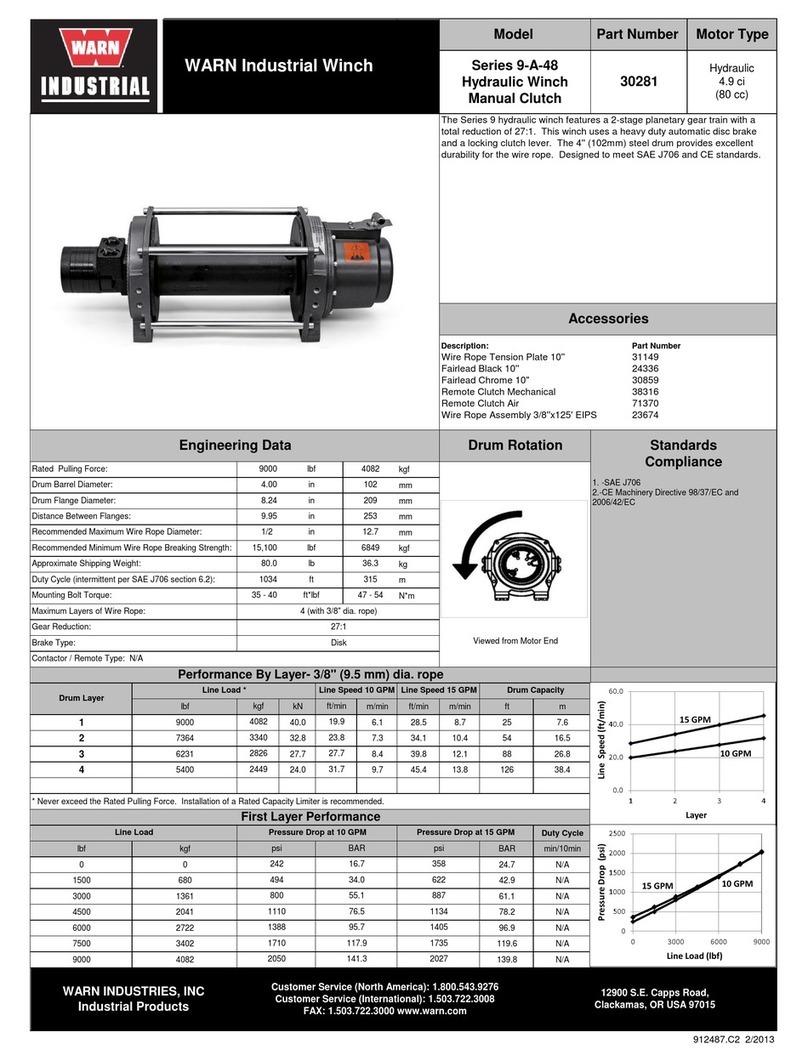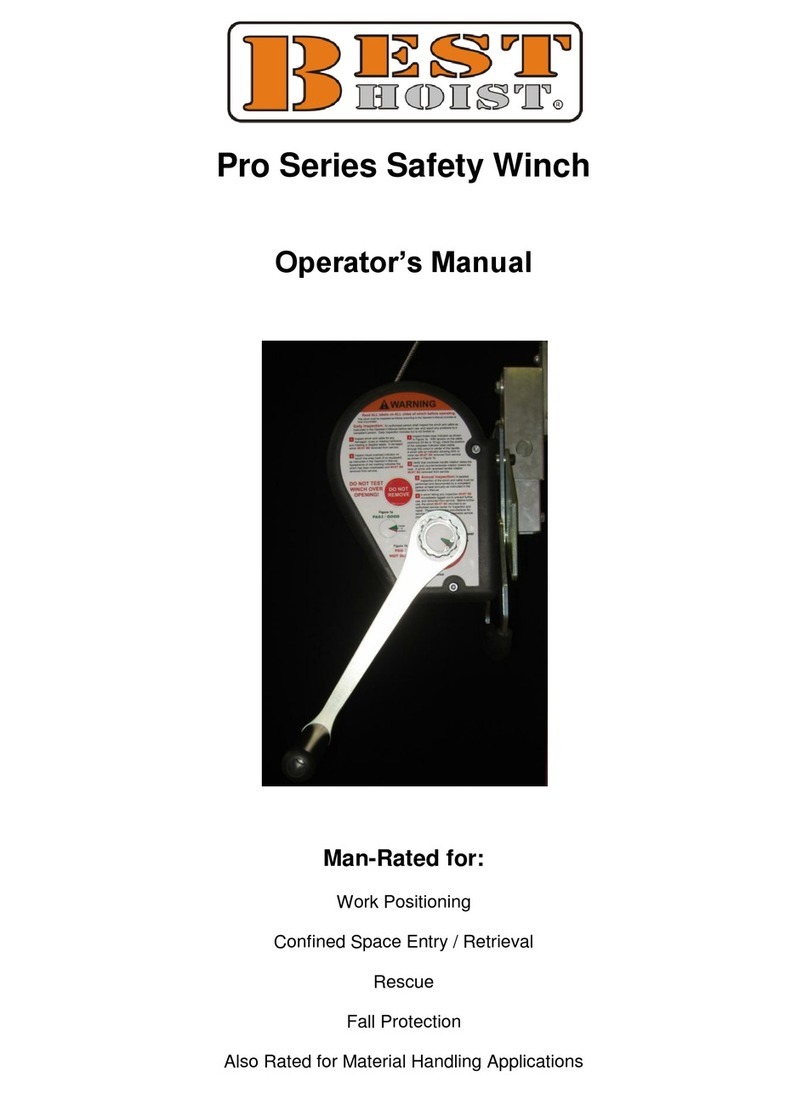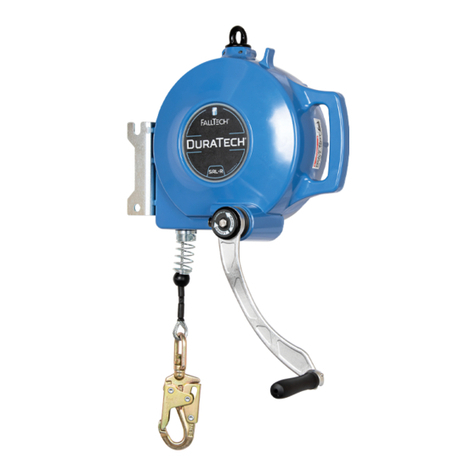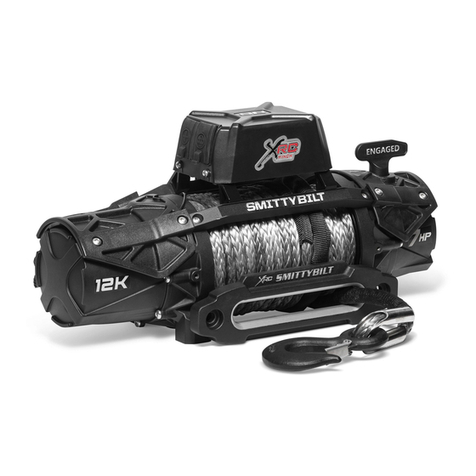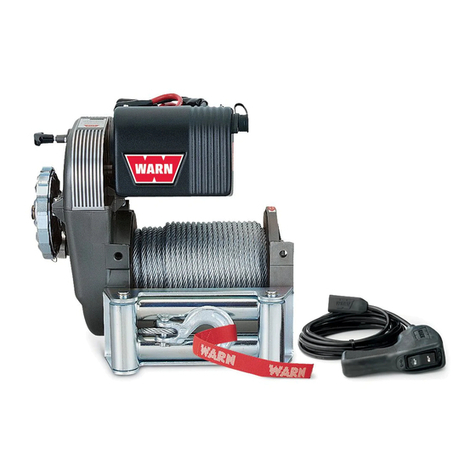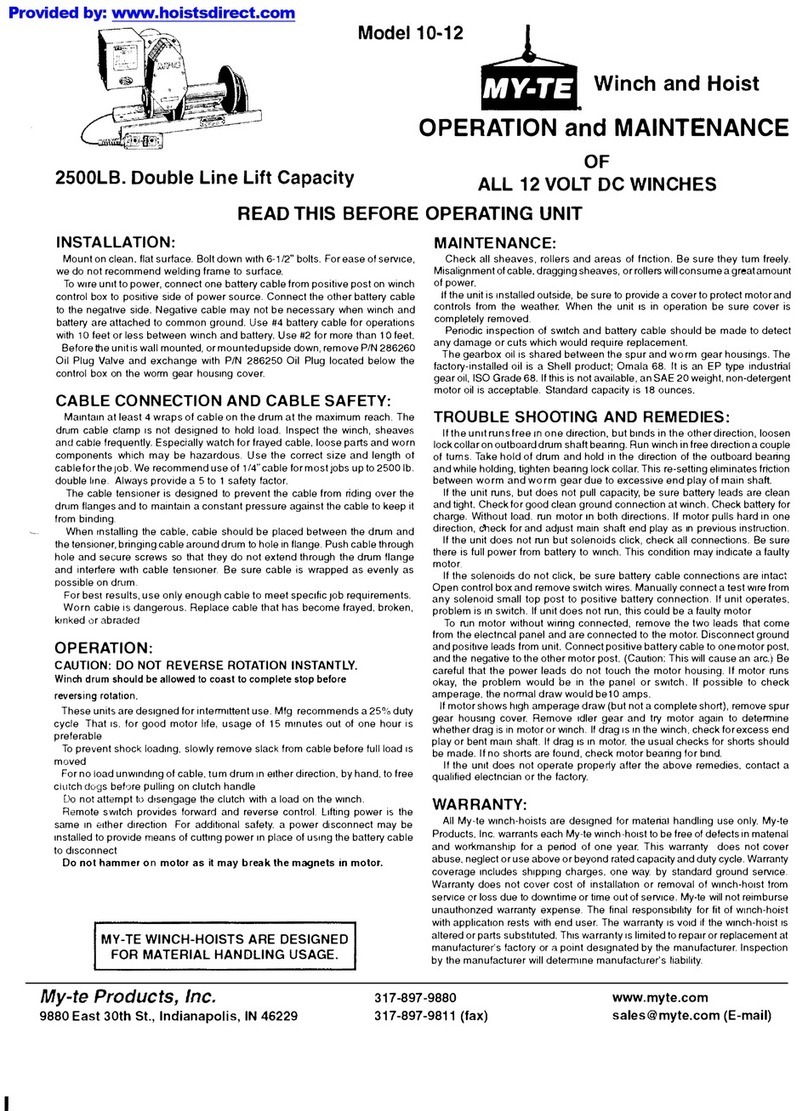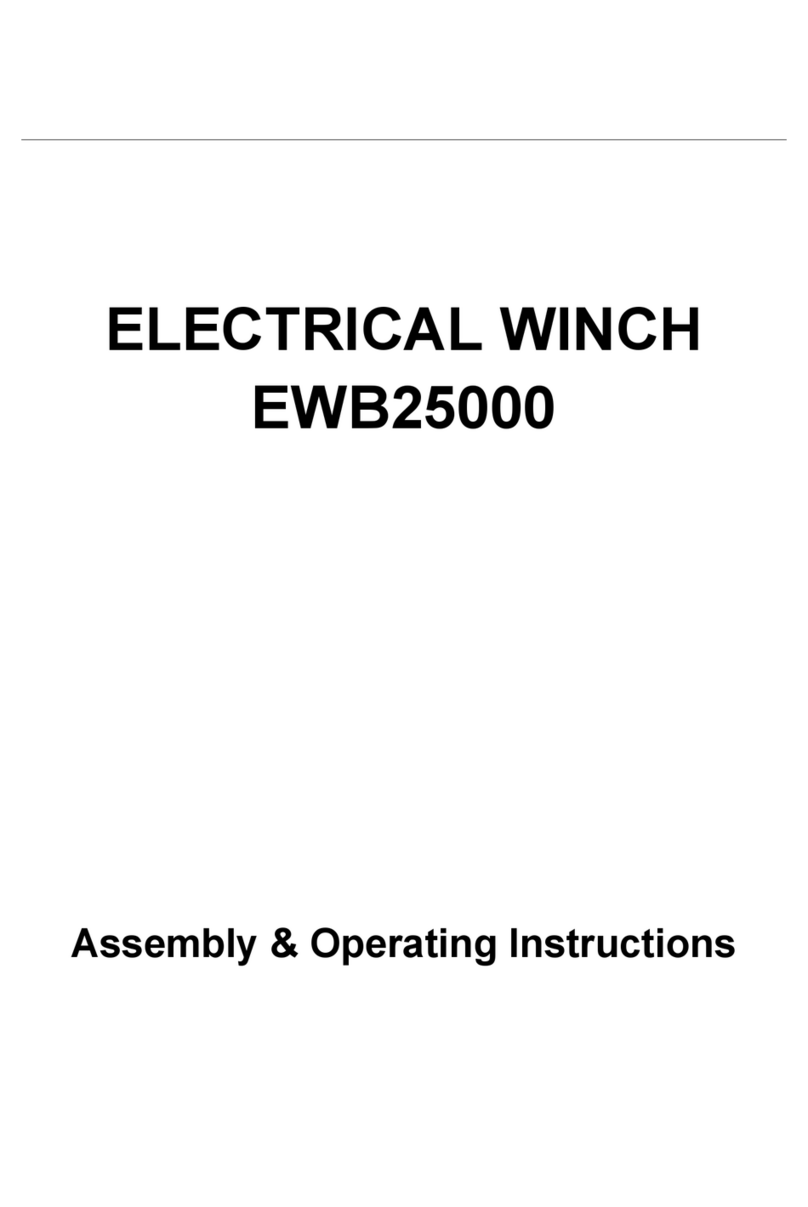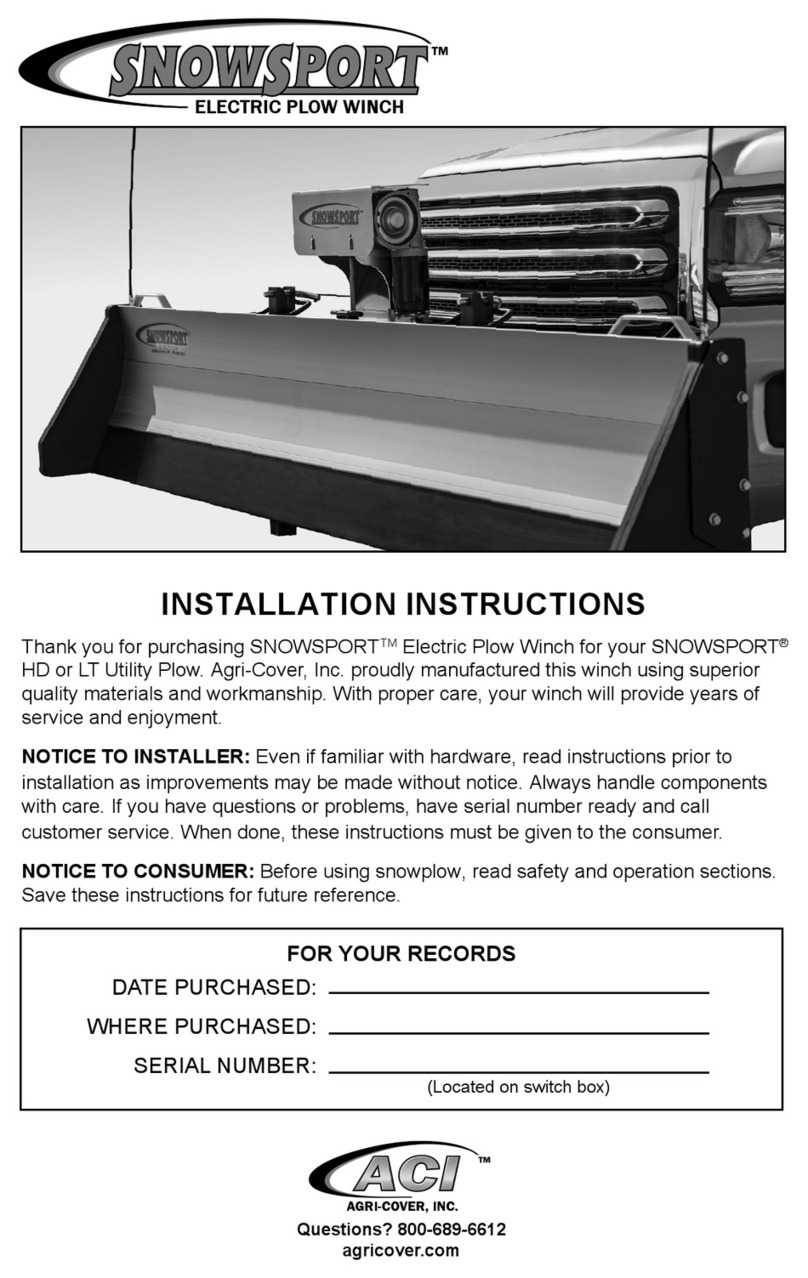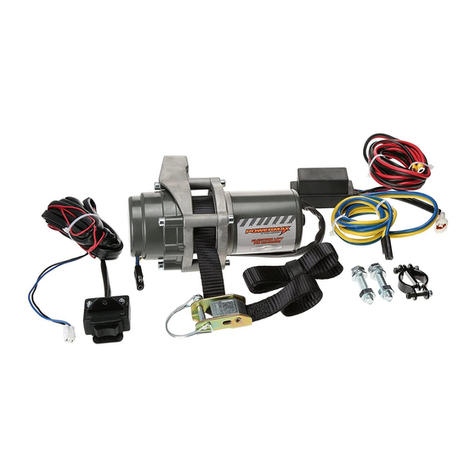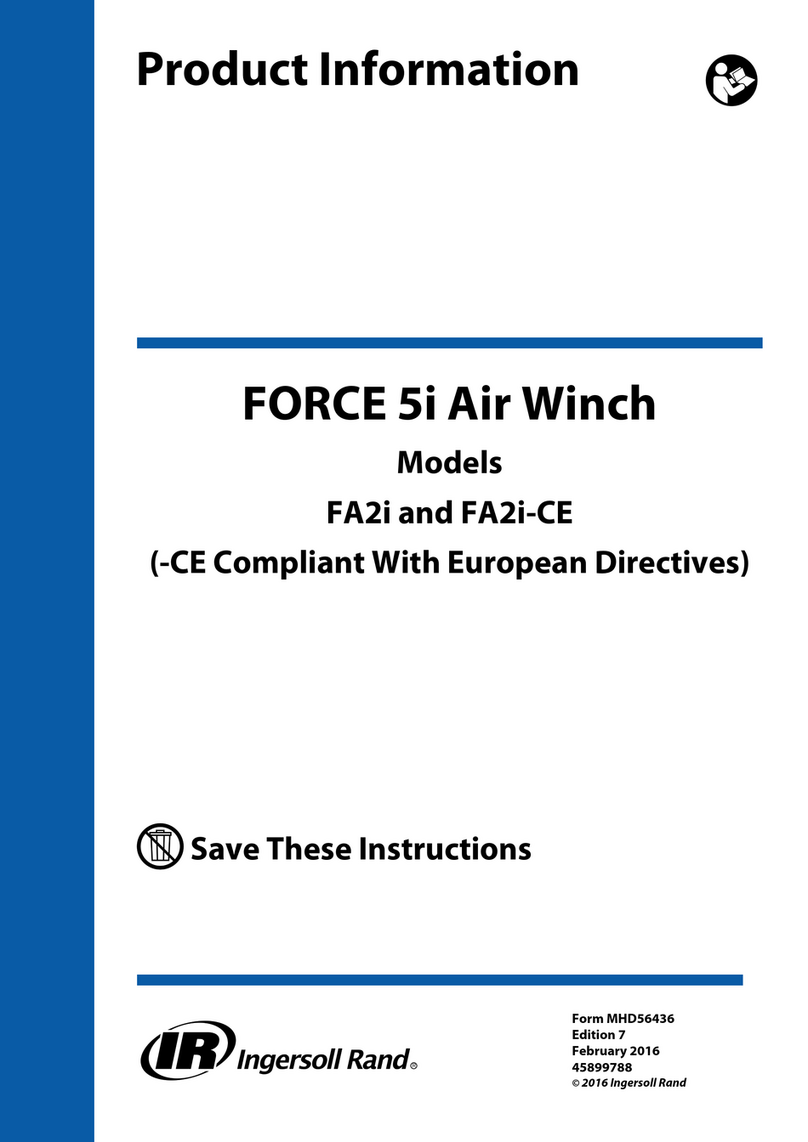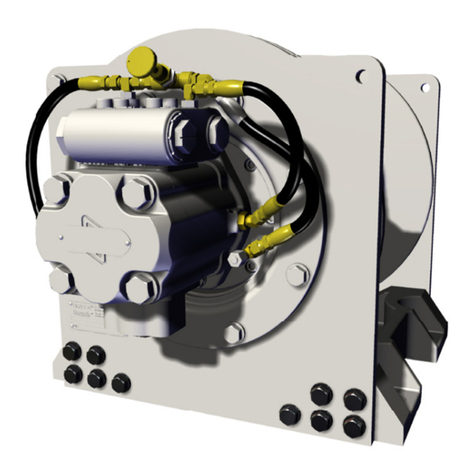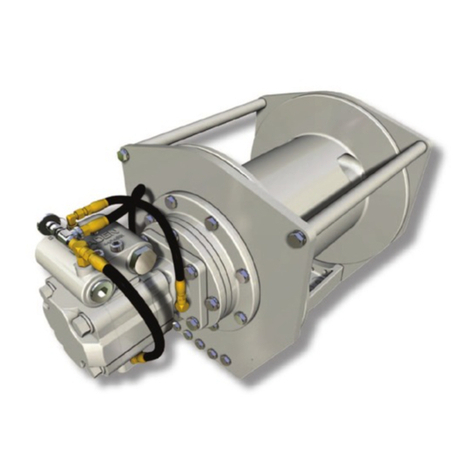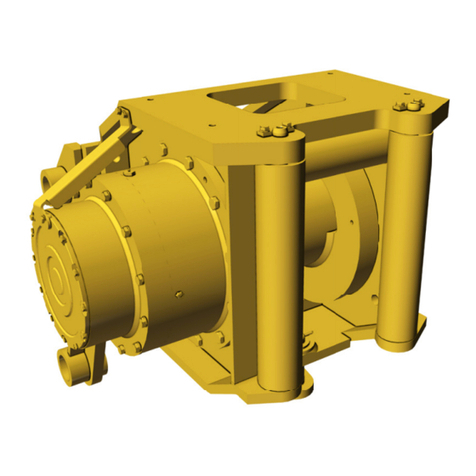
5
GENERAL SAFETY RECOMMENDATIONS
Safety for operators and ground personnel is of prime con-
cern.Always take the necessary precautions to ensure the
safety of others as well as yourself. To properly ensure
safety, the prime mover and winch MUST be operated with
care and concern by the operator for the equipment. The
operator MUST also have a thorough knowledge of the
machine’s performance capabilities.
1. Read and understand ALL warning tag information,
and become familiar with ALL controls BEFORE op-
erating the winch.
2. NEVER attempt to clean, oil or perform maintenance
on a machine with the engine or prime mover running,
unless instructed to do so in this manual.
3. NEVER operate the winch controls unless you are
properly positioned at the operator’s station, you are
sure ALL personnel are clear of the work area AND
you are properly trained in the operation of the winch.
4. Assure that personnel who are responsible for hand
signals are clearly visible and that the signals to be
used are thoroughly understood by all involved.
5. Ground personnel should stay in view of the operator
and clear of the winch drum. DO NOT allow ground
personnel near a winch line under tension. A safe dis-
tanceofat least1½timesthe lengthoftheoutstretched
cable should be maintained.
6. On machines having hydraulically, mechanically and/
or cable controlled equipment or attachments, ensure
the equipment is blocked securely before servicing,
adjusting or repairing the winch. ALWAYS apply the
parking brakes before dismounting a vehicle.
7. Inspect the winch and rigging at the beginning of each
work shift. Defects should be corrected immediately.
DO NOT operate a defective winch.
8. Keep equipment in good operating condition. Perform
scheduled service and adjustments as defined in the
“Preventive Maintenance” section of this manual.
9. Anequipment warm-up procedure is recommendedfor
all start-ups, and is essential at ambient temperatures
below +40°F (5°C). Refer to the “Warm-Up Procedure”
listed in the “Preventive Maintenance” section of this
manual.
10. Check the drum clutch to be certain that the negative
draft angle is clearly evident on the clutch and clutch
plate. DO NOT use the winch if the negative draft
angles are worn straight, or if the edges of the clutch
plate are rounded or chipped.
11. External clutches on recovery winches may disengage
and drop or lose control of a load if they are NOT fully
engaged at the beginning of a lift or pull. The winch op-
erator must visually determine that the clutch is fully
engaged before lifting or pulling a load.
12. The winches described in this manual are neither de-
signed nor intended for use or application to equip-
ment used in the lifting or moving of persons.
13. DO NOT exceed the maximum pressure, PSI (kPa), or
flow, GPM (LPM), stated in the winch specifications.
14. Operate the winch at line speeds to match the job con-
ditions.
15. Protective gloves should be worn when handling wire
rope.
16. NEVER attempt to handle wire rope when the hook
end is not free. Keep all parts of body and clothing
clear of cable rollers, cable entry area of fairleads and
winch cable drum.
17. When winding wire rope on the cable drum, NEVER
attempt to maintain tension by allowing the wire rope
to slip through hands. ALWAYS use the “Hand-Over-
Hand” technique.
18. NEVER use wire rope with broken strands. Replace
damaged wire rope.
19. DO NOT weld on any part of the winch without ap-
proval of PACCAR Winch Division Engineering.
20. Use the recommended hydraulic oil and gear lubri-
cant.
21. Keep the hydraulic system clean and free of contami-
nation at all times.
22. Use the correct anchor for the wire rope and pocket in
the drum. DO NOT use knots to secure or attach the
wire rope to the drum or hook.
23. The cable anchor or ferrule is NOT intended to support
full rated load. ALWAYS maintain a minimum of five
(5) wraps on the drum. It is recommended the last five
(5) wraps of wire rope be painted bright red to serve as
a visual reminder.
24. Install guarding to prevent personnel from getting any
part of body or clothing caught at a point where the ca-
ble is wrapped onto the drum or drawn through guide
rollers or other “pinch points”.
25. Install switches or valves that will shut off power to the
winch, in locations where they can be reached by any-
one entangled in the wire rope before being drawn into
the winch drum or other “pinch point”.
26. “Deadman” controls, which automatically shut off pow-
er to the winch whenever the operator leaves his sta-
tion, should be installed whenever possible.
Failure to obey the following safety recommendations
may result in property damage, injury, or death.




















